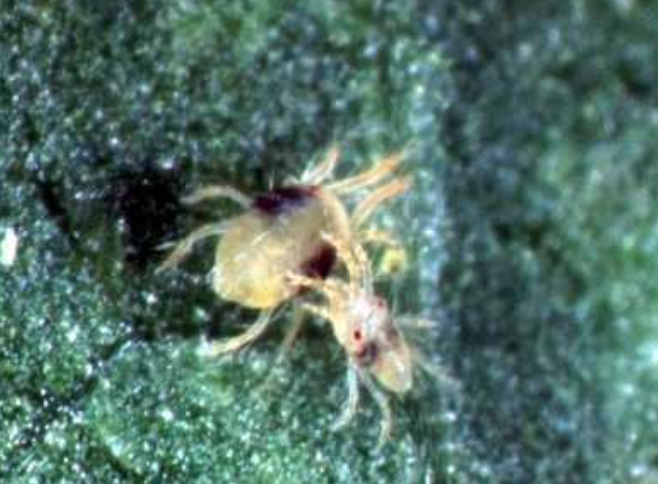Spider mites (Tetranychus spp.)
Credit: Biovision-Infonet

(c) Warwick HRI, University of Warwick
They can damage maize and fruit trees from the seedling stage to maturity. The presence of small, faint yellow blotches on the lower leaves is an indication of spider mite injury. As the colonies of mites increase in size they cause the lower leaves to become dry. The mites then migrate to the upper leaves. In Africa several species of spider mites have been reported on maize (mainly Tetranychus spp. and Olygonichus spp.). In Kenya, they are occasionally found on maize, but usually they are not of economic importance.What to do:
- Provide good growing conditions for plants. Healthy plants are more likely to withstand mite attack. Adequate irrigation is particularly important. Apply mulch and incorporate organic matter into the soil to improve the water holding capacity and reduce evaporation.
- Conserve natural enemies. Predatory mites and anthocorid bugs usually control spider mites.